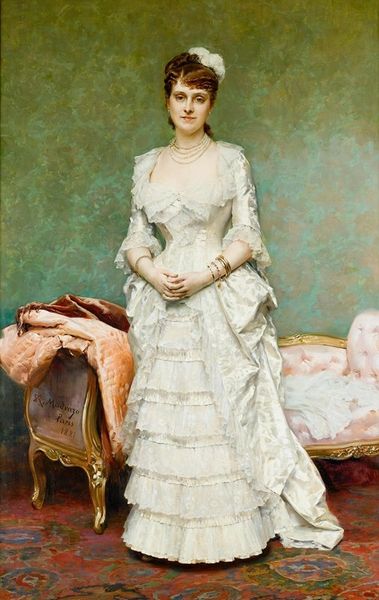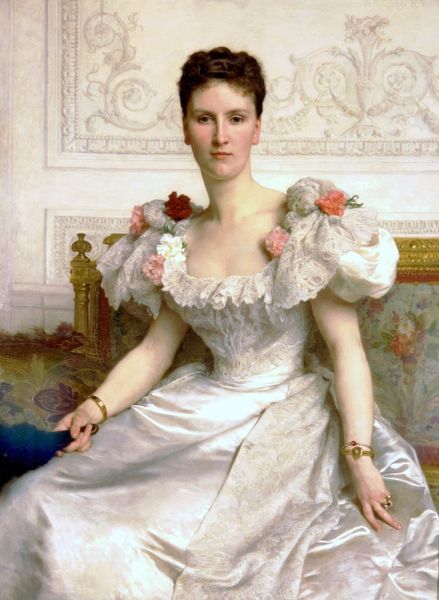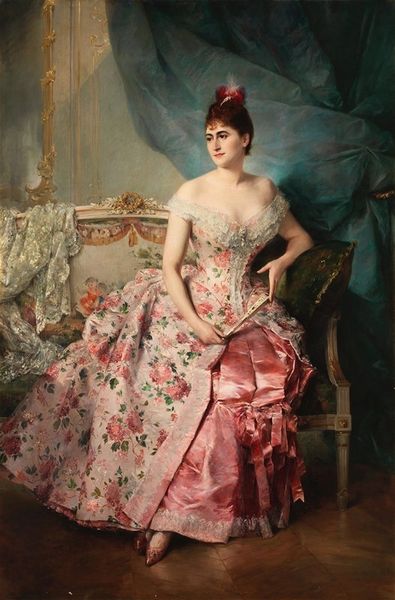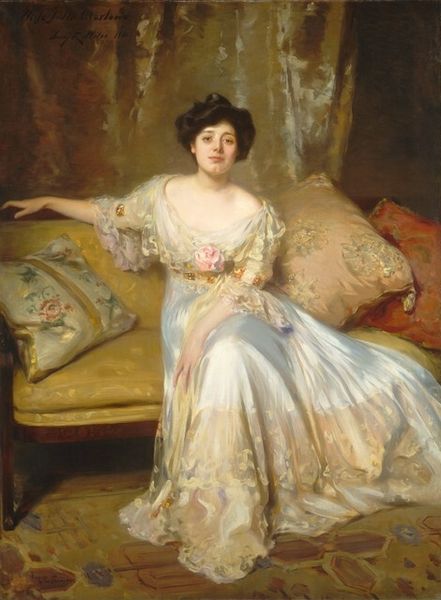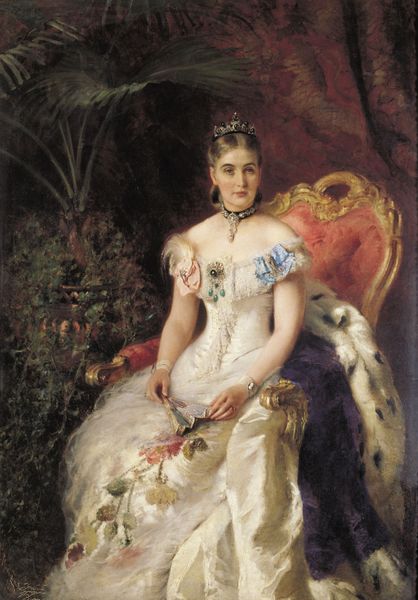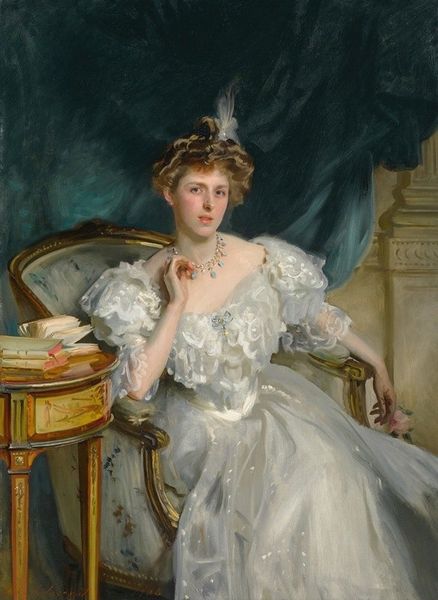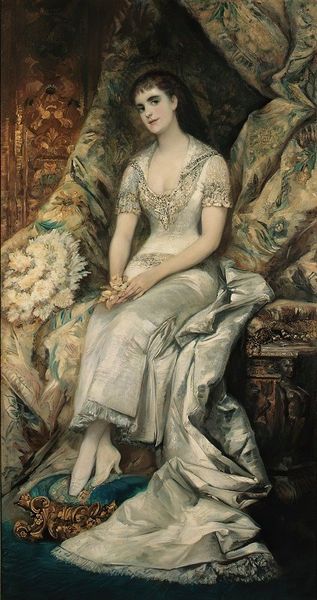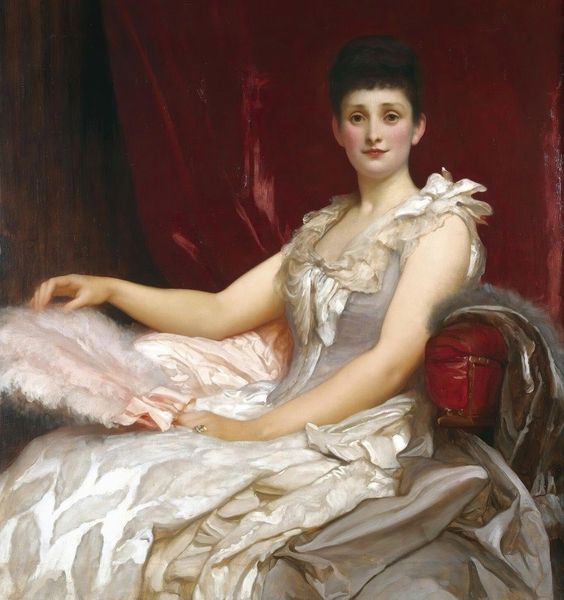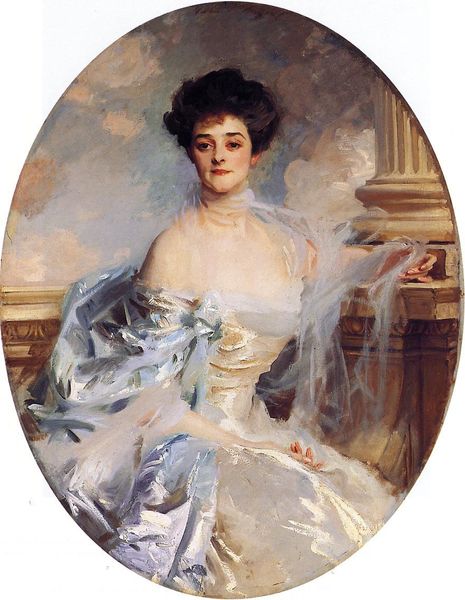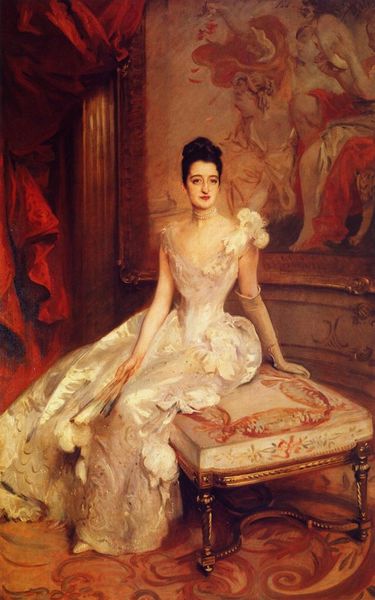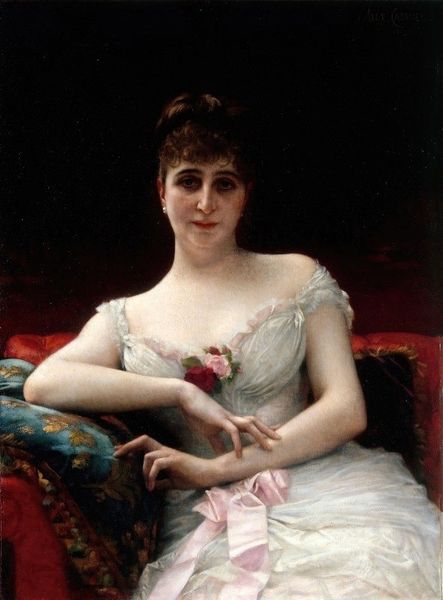
painting, oil-paint, impasto
#
portrait
#
figurative
#
fancy-picture
#
painting
#
oil-paint
#
figuration
#
impasto
#
historical fashion
#
intimism
#
romanticism
#
wedding dress
#
history-painting
#
academic-art
#
erotic-art
Copyright: Public Domain: Artvee
Editor: This is Vittorio Matteo Corcos’s “Portrait of Corinna Salmon.” It is an oil painting portraying a woman in a silvery white gown. I am immediately struck by her dress, it seems almost bridal but her stern expression contradicts this initial reading. What do you make of it? Curator: The sternness is key, and you’re right to link it to the symbolic weight of the dress itself. What do bridal gowns represent, historically and culturally? Purity, a transition into a new role. But her expression tells us this transition isn't necessarily a willing one. It clashes intriguingly with the supposed symbolism. Editor: So, it's subverting those ideas? Showing perhaps a forced or arranged marriage? Curator: Precisely! The dress, replete with white fur trim, stands as a signifier, yet the woman's gaze is one of quiet defiance, even sorrow. Consider the coat-of-arms at the top left; it signifies familial lineage, a heavy history that she must now bear, almost like armour instead of celebration. How does this visual conflict resonate with our understanding of women's roles in the late 19th century? Editor: It brings forward a certain sense of restrained unhappiness and almost claustrophobia due to social conventions, maybe? Curator: Exactly. Corcos isn’t simply painting a portrait; he is revealing a psychological landscape. The ornate clothing, normally indicative of joy, is almost trapping her. It also invites us to ask; did Corinna recognize that? Or was she, in time, conditioned to adopt the symbols and internalized expectations, in ways beyond dress? Editor: I hadn't considered all the nuances the painting holds! It’s interesting how the symbols reveal more the deeper you look. Curator: Indeed. And this deeper reading challenges the romantic vision, leaving us with a far more resonant question about the relationship between individual will and social expectation.
Comments
No comments
Be the first to comment and join the conversation on the ultimate creative platform.
